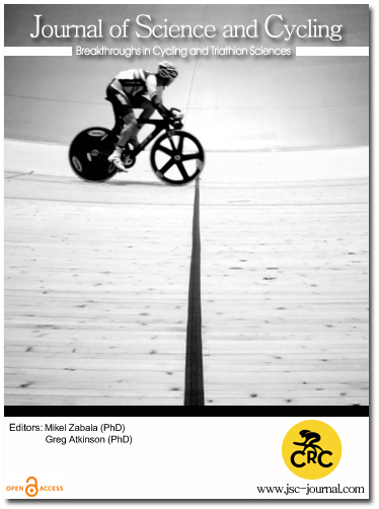Acute cycling sport causes upper respiratory tract infections and lung function loss among male recreational cyclists of different age groups
Abstract
Background: Prolonged high intensity aerobic activity could lead to suppression of mucosal immune proteins like salivary IgA subclass, lactoferrin causing temporary immune suppressed state which may lead to Upper respiratory tract infections and loss in lung function. Purpose: This study examined the effect of acute cycling sport on the status of URTI and Forced Expiratory Volume of first second (FEV1) among the recreational cyclists, who participated in their first ever acute cycling sport of minimum 140 kms in a competitive set up. Methods: Seventy five first time recreational volunteer cyclists in four age groups were analysed on their URTI and FEV1. Wisconsin Upper Respiratory Symptom Survey (WURSS-21) score was used to analyse the URTI and Digital spirometer was used to record the FEV1. Fifteen volunteers for each age group were analysed and results compared. Age groups studied were 20-25yrs, 25-30, 30-35 and 35 above. Pre event and post event URTI and FEV1 were analysed with Analysis of Covariance (ANCOVA). Highest scores of the URTI and FEV1 within the first seven days of post event were included. Results: Covariance analysis (P<.05) indicated, for both URTI and FEV1 the four groups showed significant difference among themselves on their post event status. Adjusted post event URTI means were 62.92 (20-25 yrs), 55.03 (25-30), 79.56 (30-35) and 84.63(35 above). Tukey HSD post hoc comparison indicated that 35+ group experienced significant increases (P<.05) in their URTI symptoms, though the 30-35 group also experienced considerable increase in URTI symptoms. Adjusted post event FEV1 were 79.63, 81.51, 78.39 and 78 for the four groups and the Tukey post hoc analysis (P<.05) indicated that there were significant decrements in the FEV1 of both 30-35 and 35+ groups. Discussion: Peripheral airway change and hyper reactivity due to immunologic and inflammatory cell facilitation could be the reason for temporary bronchoconstriction leading to latent loss in lung function. Conclusions: Recreational cyclists of plus 35 years are vulnerable group with respect to the upper respiratory tract infections and loss of lung function considerably due to acute long distance cycling events.Downloads
Published
How to Cite
Issue
Section
Copyright (c) 2014 Journal of Science and Cycling

This work is licensed under a Creative Commons Attribution-NonCommercial 4.0 International License.
Authors contributing to Journal of Science and Cycling agree to publish their articles under a Creative Commons CC BY-NC-ND license, allowing third parties to copy and redistribute the material in any medium or format, and to remix, transform, and build upon the material, for any purpose, even commercially, under the condition that appropriate credit is given, that a link to the license is provided, and that you indicate if changes were made. You may do so in any reasonable manner, but not in any way that suggests the licensor endorses you or your use.
Authors retain copyright of their work, with first publication rights granted to Cycling Research Center.






